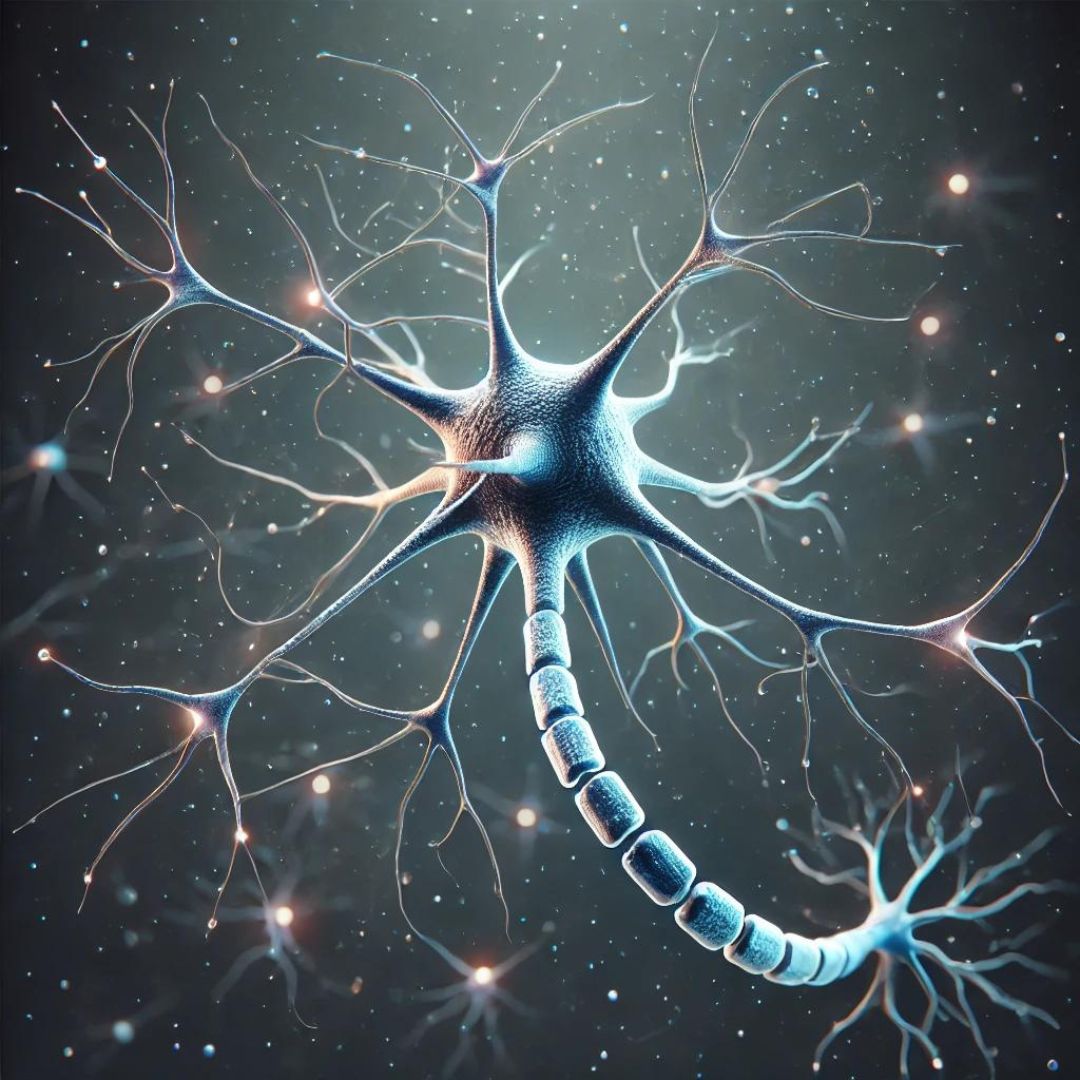Summary
Cannabinol (CBN) is a mildly psychoactive cannabinoid primarily derived from the Cannabis sativa plant, first isolated in 1896. As a low-affinity partial agonist at both the CB1 and CB2 receptors of the endocannabinoid system (ECS), CBN distinguishes itself from other cannabinoids, such as Δ9-tetrahydrocannabinol (THC), by exhibiting a weaker psychoactive effect. This unique profile requires higher doses of CBN to achieve sedative effects, which have led to its nickname as the "sleep molecule" due to its reported calming and relaxing properties, especially when sourced from aged cannabis that contains elevated levels of CBN resulting from THC degradation [1][2][3].
The interaction of CBN with the ECS, particularly its binding to CB1 receptors located primarily in the central nervous system, facilitates its sedative effects without eliciting the intense high characteristic of THC. Preliminary research suggests that CBN may not only improve sleep quality and duration but also provide potential relief from anxiety and insomnia, marking it as a candidate for alternative therapeutic treatments [3][1][2]. The interplay between CBN’s action on CB1 and CB2 receptors contributes to its overall sedative effect, suggesting that it may also help manage discomfort and inflammation, which can further enhance sleep quality [4][5].
Despite the promising therapeutic applications, the body of clinical evidence surrounding CBN remains limited, and there are ongoing debates regarding its efficacy and safety. Side effects such as drowsiness and changes in appetite have been reported, prompting caution for individuals with pre-existing health conditions or those on concurrent medications [6][7]. As interest in cannabinoid research grows, understanding CBN's complex interactions with the ECS and its potential applications will be critical for future therapeutic development.
Cannabinol (CBN)
Cannabinol (CBN) is a mildly psychoactive cannabinoid found in the Cannabis sativa plant, and it can also be produced synthetically [1]. First isolated in 1896, CBN acts as a low-affinity partial agonist at both the CB1 and CB2 receptors, which are key components of the endocannabinoid system (ECS) [2]. Although it shares a similar mechanism of action with other phytocannabinoids, such as Δ9-tetrahydrocannabinol (THC), CBN exhibits a lower affinity for CB1 receptors. This characteristic necessitates significantly higher doses to achieve effects such as mild sedation [1][2].
Mechanism of Action
The interaction of CBN with the ECS, specifically through the CB1 and CB2 receptors, is central to its pharmacological effects. At CB1 receptors, which are primarily located in the central nervous system, CBN can induce sedative effects without producing the strong psychoactive high associated with THC [2]. The sedative properties of CBN have led to its nickname as the "sleep molecule," as many users report a calming and relaxing effect, particularly when derived from aged marijuana flowers that contain higher concentrations of CBN due to the degradation of THC [3][1].
Clinical Implications
Current research indicates that CBN may serve as an alternative treatment for various conditions, including sleep disorders and anxiety, although clinical evidence remains limited [3][1]. CBN products, particularly full-spectrum oils, are often recommended for their more balanced effects, as isolated CBN products may not possess the same therapeutic benefits [3]. Given its lower psychoactivity and potential side effects like drowsiness and changes in appetite, CBN may be a suitable option for individuals seeking the therapeutic effects of cannabis without the intoxicating properties associated with THC [3][1].
While the therapeutic potential of CBN continues to be explored, it is essential for individuals with underlying health conditions to consult healthcare professionals before incorporating CBN into their treatment regimen [3].
Cannabinoid Receptors
Cannabinoid receptors play a crucial role in mediating the effects of cannabinoids, including cannabinol (CBN). The two primary receptors within the endocannabinoid system are the CB1 and CB2 receptors.
CB1 Receptors
CB1 receptors are predominantly located in the central nervous system (CNS), particularly in areas associated with mood regulation and sensory perception such as the basal ganglia, hippocampus, and cerebellum [8]. Activation of CB1 receptors by cannabinoids like CBN can lead to various physiological effects, including sedation. This sedative effect may be linked to the modulation of neurotransmitter release, as the activation of CB1 receptors generally results in the inhibition of excitatory neurotransmitter release, which is pivotal in regulating arousal and sleep cycles [9][8]. Additionally, CBN has been shown to interact with CB1 receptors in a manner that could promote relaxation and decrease anxiety, enhancing its sedative properties [4].
CB2 Receptors
CB2 receptors, while also present in the CNS, are more uniformly distributed throughout the peripheral nervous system and immune cells [8]. These receptors are primarily associated with anti-inflammatory effects, which can indirectly influence sleep and sedation by alleviating discomfort and pain. Although CBN's interaction with CB2 receptors is less understood compared to CB1 receptors, some evidence suggests that activation of CB2 may contribute to an overall calming effect, potentially enhancing sleep quality by reducing inflammation-related discomfort [4].
Interaction and Therapeutic Implications
CBN's interaction with both CB1 and CB2 receptors may synergistically contribute to its sedative effects. By binding to CB1 receptors, CBN could inhibit excitatory neurotransmission, promoting sedation and relaxation. Concurrently, its action on CB2 receptors may help modulate pain and inflammation, further supporting a state conducive to sleep and relaxation. This dual mechanism suggests that CBN might serve as a therapeutic agent for sleep disorders and anxiety-related conditions, although further research is necessary to elucidate the specific pathways involved [5][9].
Mechanism of Interaction
Binding to Receptors
Cannabinol (CBN) primarily interacts with the CB1 and CB2 receptors, which are part of the endocannabinoid system. These receptors are distributed throughout the body and play crucial roles in various physiological processes, including mood regulation, pain perception, and immune function. CBN acts as an agonist at both CB1 and CB2 receptors, leading to a range of therapeutic effects, including sedation and analgesia [6][5].
Sedative Effects
The sedative properties of CBN are attributed to its binding affinity for the CB1 receptor, which is predominantly located in the brain. Activation of CB1 receptors can inhibit neurotransmitter release and decrease neuronal excitability, contributing to the calming and sedative effects associated with CBN consumption [6][5]. This interaction is particularly beneficial for individuals seeking relief from insomnia or anxiety without the psychoactive effects commonly associated with tetrahydrocannabinol (THC) [6].
Modulation of Other Pathways
In addition to its action on CB1 and CB2 receptors, CBN also influences other channels and pathways that may enhance its sedative effects. For instance, CBN has been identified as a potent agonist of transient receptor potential (TRP) channels, including TRPV1, TRPV2, TRPV3, and TRPA1, which are involved in pain and temperature sensation [5]. This interaction can lead to calcium influx into cells, triggering various downstream signaling pathways that may further contribute to its sedative and analgesic properties.
Potential Synergistic Effects
CBN’s interaction with the endocannabinoid system can be enhanced when used in combination with other cannabinoids, such as cannabidiol (CBD). Studies suggest that CBD may work synergistically with CBN, potentially enhancing its sedative and therapeutic effects while mitigating any unwanted side effects associated with higher doses of CBN alone [7].
Through its multifaceted interactions with CB1 and CB2 receptors, as well as its modulation of additional pathways, CBN presents a promising option for those seeking non-intoxicating sedative effects, making it a subject of increasing interest in cannabinoid research and therapeutic applications.
Sedative Effects of CBN
Cannabinol (CBN) is being researched for its potential sedative effects, particularly in relation to sleep enhancement and management of insomnia. Preliminary studies suggest that CBN can serve as a powerful sedative, with evidence indicating its ability to prolong sleep duration in animal models, specifically mice [10][11]. Although the precise mechanisms by which CBN exerts these effects are not yet fully understood, its interaction with the endocannabinoid system, particularly the CB1 and CB2 receptors, is believed to play a significant role [12].
Potential Therapeutic Applications
Pain Management
The potential of CBN as a therapeutic agent extends to pain management. Preclinical studies have suggested that CBN may exhibit anti-inflammatory properties, which could be harnessed in treating conditions characterized by chronic pain and inflammation [5][13]. By interacting with the endocannabinoid receptors, CBN may help to alleviate pain symptoms without the adverse effects commonly associated with nonsteroidal anti-inflammatory drugs (NSAIDs) [7].
Sedative Effects of CBN
Cannabinol (CBN) has been investigated for its sedative properties, particularly in relation to its interaction with the CB1 and CB2 receptors in the endocannabinoid system. Research indicates that CBN may enhance sedation by activating these receptors, leading to a decrease in neurological activity, which is beneficial for individuals experiencing insomnia and other sleep disorders [7][14]. This sedative effect is thought to stem from CBN's ability to modulate the pathways that govern sleep regulation, offering a promising alternative to traditional sleep medications that often carry significant side effects [13].
Synergistic Effects with Other Cannabinoids
CBN has also been shown to work synergistically with other cannabinoids, such as cannabidiol (CBD), enhancing their therapeutic effects for pain and inflammation [7]. This synergy is particularly relevant in managing complex conditions where multiple symptoms, such as pain and anxiety, coexist. The combination of CBN and CBD could potentially lead to lower required doses of conventional medications, thus reducing the risk of side effects and dependency [7][15].
Challenges and Considerations
While the therapeutic applications of CBN are promising, caution is advised when combining it with other medications, particularly those that share similar mechanisms of action, such as anxiety medications [7]. The interaction between CBN and these drugs may lead to a reduction in efficacy or an increase in side effects. As such, individuals considering CBN for therapeutic purposes should consult healthcare professionals to tailor dosages appropriately and mitigate risks associated with polypharmacy [7][15].
sources:
"What Is CBN? Benefits, Risks And Where To Buy." Forbes, https://www.forbes.com/health/body/what-is-cbn/. Accessed 24 Sept. 2024.
"Cannabinol." Wikipedia, https://en.wikipedia.org/wiki/Cannabinol. Accessed 24 Sept. 2024.
"What Are the CBN Side Effects? All CBN Cannabinoid Effects." Neurogan, https://neurogan.com/blogs/news/cbn-side-effects. Accessed 24 Sept. 2024.
"CB1 and CB2 Receptors - Comparison Guide." Secret Nature, https://secretnaturecbd.com/blogs/cbd/cb1-vs-cb2-receptors-comparison-guide. Accessed 24 Sept. 2024.
"CB1 Cannabinoid Receptor Signaling and Biased Signaling." Frontiers in Pharmacology, https://www.frontiersin.org/articles/10.3389/fphar.2020.01235/full. Accessed 24 Sept. 2024.
ElSohly, M.A., et al. "The Effects of Subacute Exposure to a Water-Soluble Cannabinol Compound." Frontiers in Pharmacology, https://www.frontiersin.org/articles/10.3389/fphar.2022.849755/full. Accessed 24 Sept. 2024.
"Minor Cannabinoids: Biosynthesis, Molecular Pharmacology." Frontiers in Pharmacology, https://www.frontiersin.org/articles/10.3389/fphar.2020.595052/full. Accessed 24 Sept. 2024.
"Uncovering the CBN Effects: Benefits, Side Effects & More." mdbiowellness, https://www.mdbiowellness.com/blogs/learn/cbn-effects-benefits-side-effects. Accessed 24 Sept. 2024.
"Taking Cannabidiol With Other Medications: CBD-Drug Interaction Checker." Drugs.com, https://www.drugs.com/medical-answers/taking-cannabidiol-cbd-other-medications-3547741/. Accessed 24 Sept. 2024.
"How CBN Can Improve Your Sleep, Mood, and Health." GoodRx, https://www.goodrx.com/conditions/cannabinoids/cbn-sleep-mood-health. Accessed 24 Sept. 2024.
"Research Shows 9 Potential Health Benefits of CBN." Forbes Health, https://www.forbes.com/health/body/cbn-health-benefits/. Accessed 24 Sept. 2024.
"Complete CBN Guide: Uses, Benefits, and Research." Slumber, https://slumbercbn.com/blogs/learn/complete-cbn-guide. Accessed 24 Sept. 2024.
"Side Effects of CBN: What You Should Know Before You Try." Discover Magazine, https://www.discovermagazine.com/health/side-effects-of-cbn-what-you-should-know-before-you-try. Accessed 24 Sept. 2024.
"CBD and Drug Interactions: What You Need to Know." Healthline, https://www.healthline.com/health/cbd-drug-interactions. Accessed 24 Sept. 2024.
"Cannabinol and Sleep: Separating Fact from Fiction." PubMed, https://pubmed.ncbi.nlm.nih.gov/31607328/. Accessed 24 Sept. 2024.
"Cannabinol (CBN; 30 and 300 mg) Effects on Sleep and Next-Day Performance." BMJ Open, https://bmjopen.bmj.com/content/11/5/e043679. Accessed 24 Sept. 2024.
"Cannabinol: Uses, Interactions, Mechanism of Action." DrugBank Online, https://go.drugbank.com/drugs/DB11931. Accessed 24 Sept. 2024.




